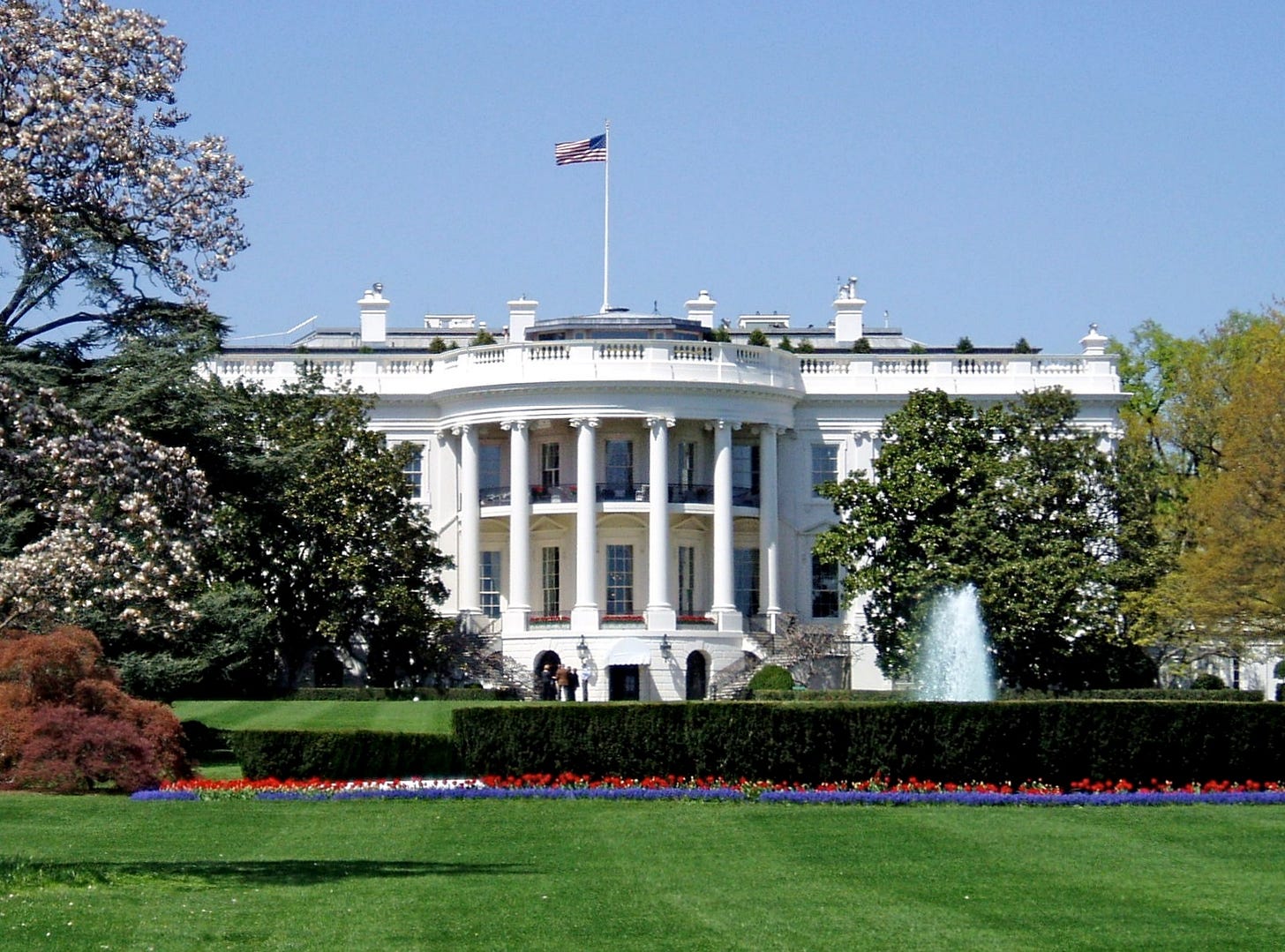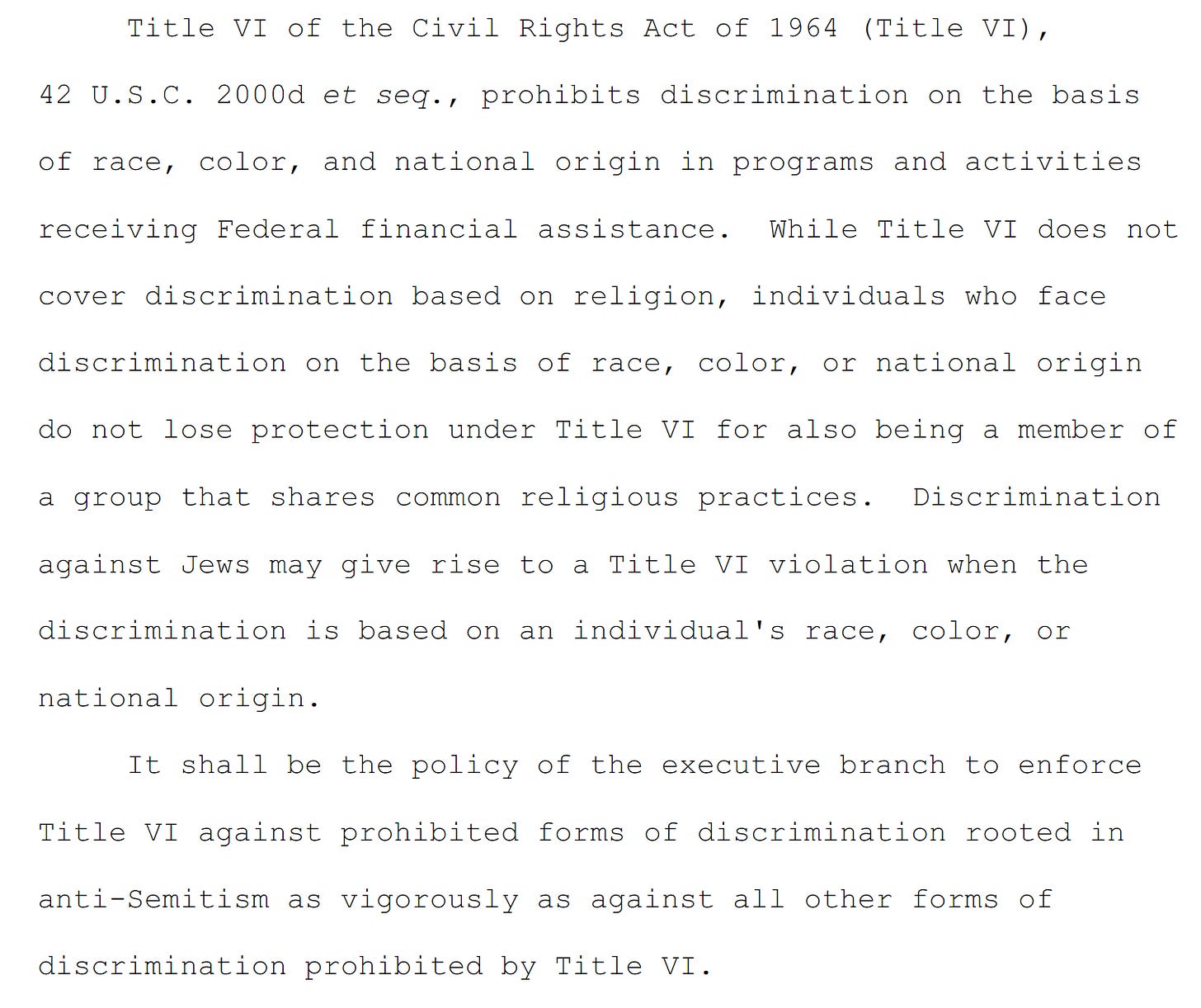Trump's Redefinition of Jewish Identity That Wasn't
A cautionary tale about a national freak-out over something that never happened

Regular readers of this newsletter know that I have not been sparing in my criticism of President Donald Trump, or his conduct towards Jews. I’ve spent years writing about the anti-Semitism within his ideological circle and evident from his own rhetoric and conduct. These facts remain real concerns. But the danger of a powerful narrative is that it can lead us to shoehorn events into it that don’t actually belong.
That’s what happened yesterday when it was announced that Trump would be signing an executive order to combat anti-Semitism on university campuses. Critics immediately seized on a New York Times report that claimed that the order—whose text it did not cite—would “define Judaism as a nationality, not just a religion.” In short order, “Judaism” began trending on Twitter for all the wrong reasons. Countless celebrities and commentators claimed that this was an attempt to define Jews as un-American and suggested it was the first step towards deportation or even a Holocaust.
My goal here is not to shame people who were expressing their legitimate heartfelt concerns, which is why I’m not embedding any of those tweets. I just want to explain what really happened, what the executive order actually says, and how we can avoid being taken in by such panics in the future.
Because as it turns out, the executive order does not redefine Judaism as a nationality. The full text, which was released today, simply echoes Obama era doctrine for protecting Jews under Title VI of the Civil Rights Act. Because Title VI does not mention discrimination based on religion, it could be interpreted to exclude protection for religious groups like Sikhs, Muslims, Jews, and others. To close this loophole, the Obama administration’s assistant attorney general for civil rights Tom Perez—now the head of the Democratic National Committee—crafted a policy based on prior precedent that stated that these religious groups were nonetheless covered under Title VI’s provisions, despite the language of the act. Basically, the idea was that although these groups might not define themselves as a “nation” or “race,” because racists define them that way and attack them as such, they are protected. A loophole of sorts to get around a loophole. Slate legal writer Mark Joseph Stern has an excellent detailed breakdown of this policy and its history.
You can read Perez’s 2010 letter on this here, embedded below courtesy of Media Matters’ estimable Matt Gertz, who got this right from the start:
The Trump executive order on anti-Semitism simply echoes this language, as you can read below:

And lest you think that the Trump administration changed the text of the order after the public criticism, Anti-Defamation League head Jonathan Greenblatt confirmed that he’d seen this language in the draft from the beginning, which is why ADL supported it.
Simply put, the New York Times blew the story, and Twitter had a meltdown over its bad reporting.
What really matters
Just because Twitter learned the wrong lessons from this executive order, however, doesn’t mean there aren’t lessons to be learned. Having dispensed with the hysteria, it’s worth focusing on some of the real issues at play here:
Trump isn't going to deport Jews. But there are other groups he actually explicitly targets for deportation and travel bans, and they deserve our attention.
The target of this order is university campuses, which has raised concerns over whether it will be used to quell criticism of Israel on campus. The order itself, however, states that “agencies shall not diminish or infringe upon any right protected under Federal law or under the First Amendment.” Moreover, the internationally-recognized definition of anti-Semitism that the order cites explicitly states, “criticism of Israel similar to that leveled against any other country cannot be regarded as antisemitic.” Finally, as Stern notes in Slate, any claims of anti-Semitism involving Israel can only be registered after claims of other ethnic or religiously-based anti-Semitism are established. This doesn’t mean someone won’t try to misuse the order to go after non-bigoted activists on campus, but it does make it unlikely. As Stern puts it, “Is this order red meat for Republicans who believe colleges are increasingly hostile to Jews? Probably. Will it quash the pro-Palestine movement on campuses or impose an unwanted classification on American Jews? Absolutely not.”
That said, it is worth reiterating two points:
— Outside attempts to dictate the campus debate over Israel, whether pro or con, are illiberal and counter to academic freedom, whether they involve suppressing those who support Palestinians or boycotting those who support Israel.
— Anti-Semitism can cloak itself as “anti-Israel” for the purposes of deniability and respectability (as regular readers of my work know), and serious people should combat this insidious phenomenon and distinguish it from legitimate and necessary criticism of Israel.Trump, however, is not serious about anti-Semitism, he is complicit in it. This is why so many Jews have so little confidence in his ability to fairly address the issue.
Finally, social media incentives tend to reward our worst instincts, and this was on display throughout the executive order fiasco. Without reading the text of the order in question, numerous high profile Twitter users shared dire warnings about potential deportations and worse that quickly went viral, racking up hundreds of thousands of retweets. Their corrections, if any, once the text of the order was released, did not. This matters not simply because it misinforms the public discourse, but because it scares real people. Those with large social media followings have the ability to frighten their readers, and if they choose to go there—as is sometimes necessary—they have a responsibility to ensure that the information they are sharing is accurate. Readers should take note of who got this issue right, who got it wrong, who corrected, and who didn’t, and judge accordingly.
As always, I’m happy to field your questions via email, so if you have any further thoughts or inquiries, feel free to send them my way. I leave you with this pearl of wisdom:

My goal is to help as many people as possible understand some of today’s most vexing subjects in plain English and without condescension. If you liked this piece and want to support this sort of journalism, please be sure to subscribe to get future installments directly in your inbox, and tell your friends about the newsletter.





